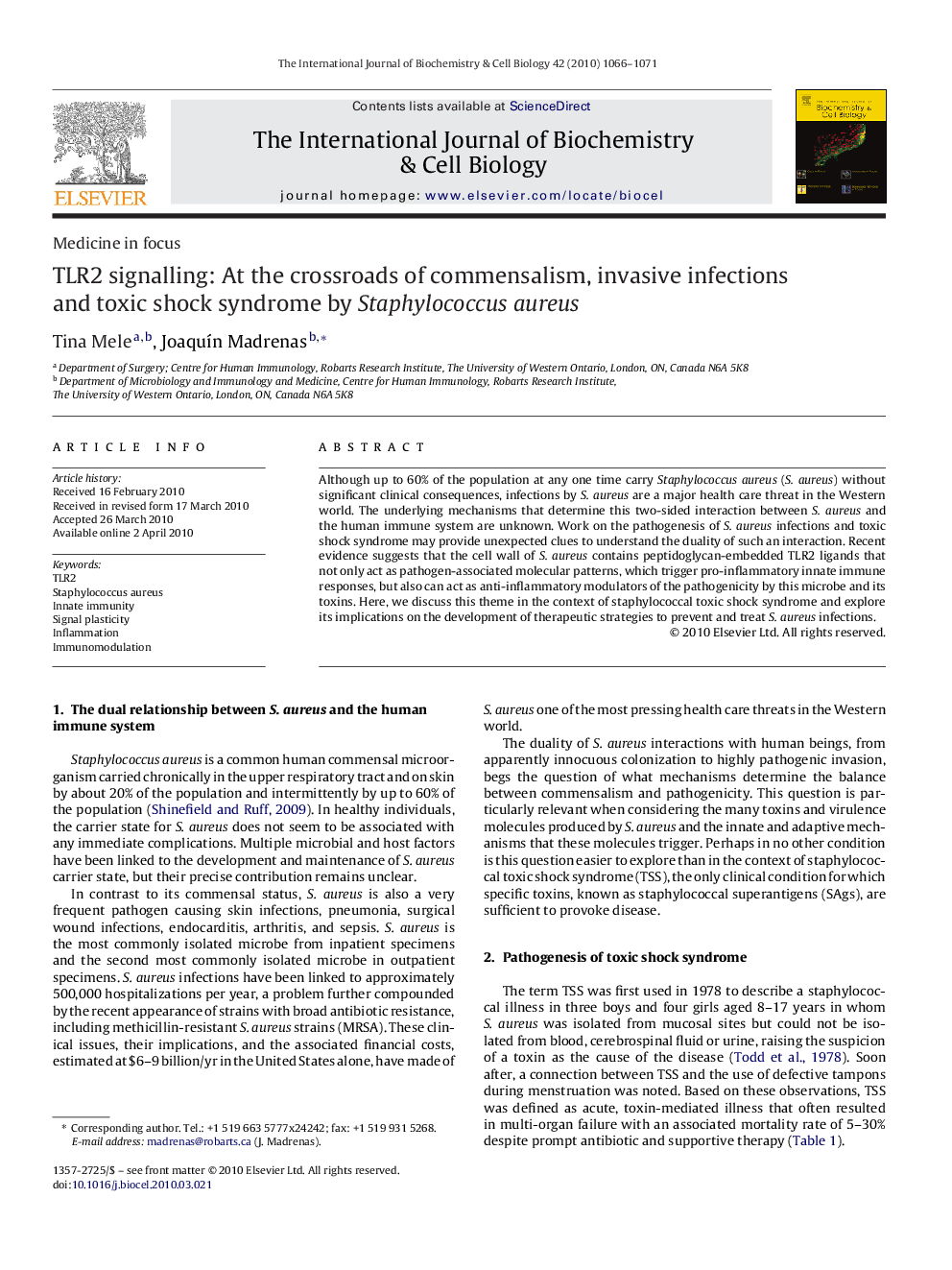| Article ID | Journal | Published Year | Pages | File Type |
|---|---|---|---|---|
| 1984420 | The International Journal of Biochemistry & Cell Biology | 2010 | 6 Pages |
Abstract
Although up to 60% of the population at any one time carry Staphylococcus aureus (S. aureus) without significant clinical consequences, infections by S. aureus are a major health care threat in the Western world. The underlying mechanisms that determine this two-sided interaction between S. aureus and the human immune system are unknown. Work on the pathogenesis of S. aureus infections and toxic shock syndrome may provide unexpected clues to understand the duality of such an interaction. Recent evidence suggests that the cell wall of S. aureus contains peptidoglycan-embedded TLR2 ligands that not only act as pathogen-associated molecular patterns, which trigger pro-inflammatory innate immune responses, but also can act as anti-inflammatory modulators of the pathogenicity by this microbe and its toxins. Here, we discuss this theme in the context of staphylococcal toxic shock syndrome and explore its implications on the development of therapeutic strategies to prevent and treat S. aureus infections.
Related Topics
Life Sciences
Biochemistry, Genetics and Molecular Biology
Biochemistry
Authors
Tina Mele, JoaquÃn Madrenas,
